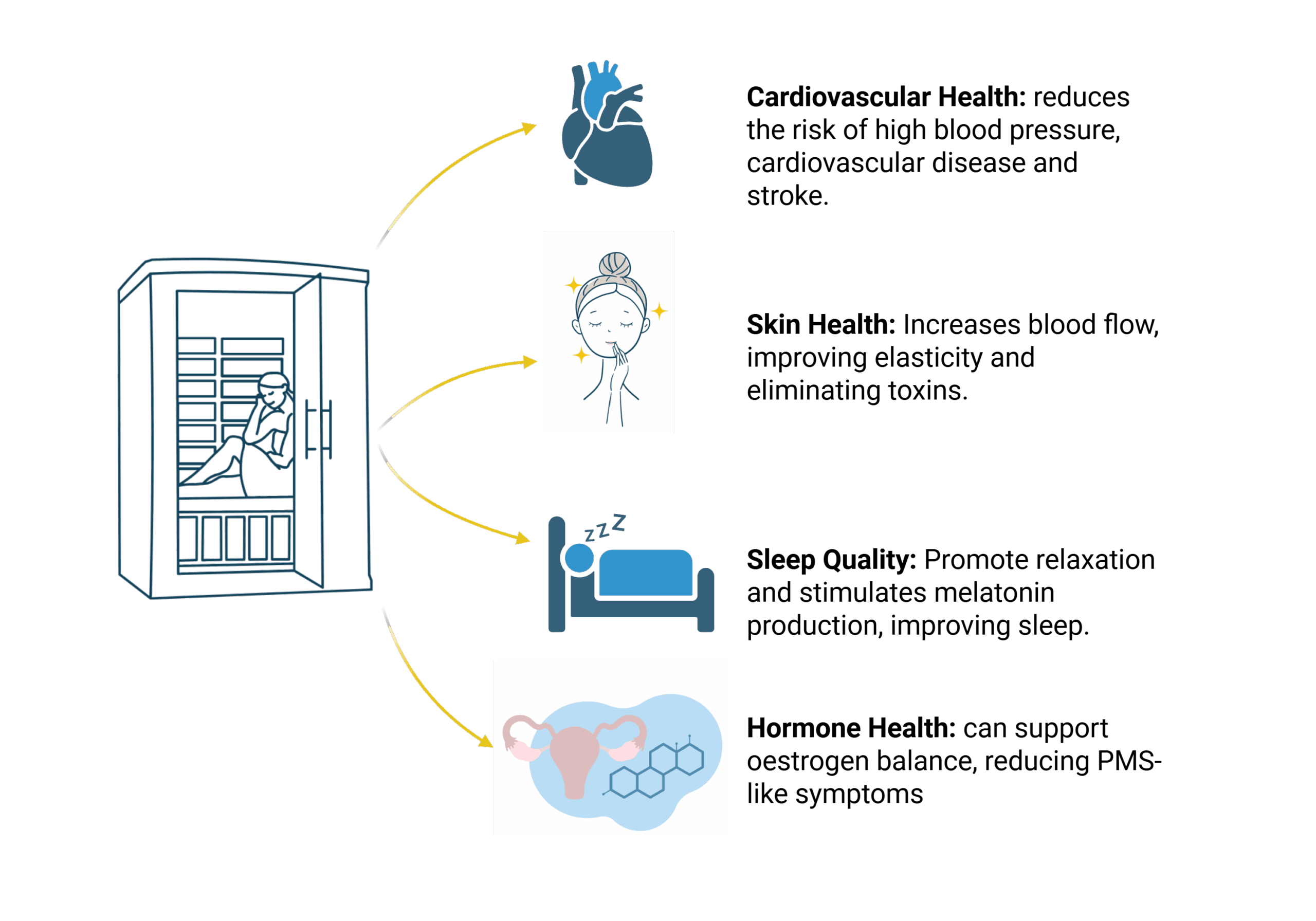Saunas have become one of the hottest wellness trends of the moment but are they truly worth the heat, or just hype? The answer appears to be worth it. Beyond their obvious appeal as a deeply relaxing ritual, saunas offer a range of benefits that may be especially valuable during menopause.
How Saunas Work
Typical sauna temperatures range from 65–90 °C. Once inside, your body experiences “heat stress,” which raises your core temperature and prompts the cardiovascular system to work harder. Heart rate increases, circulation improves, and blood is diverted toward the skin, triggering sweating and cooling. This cascade of effects ultimately boosts cardiac output and conditions the body in a way similar to moderate exercise.

Cardiovascular Health
One of the most well-documented benefits of regular sauna use is its positive impact on heart health. This is especially important during menopause, a stage when the natural decline in oestrogen increases the risk of high blood pressure, heart disease, and stroke. Sauna bathing helps counteract these risks.
Studies show that 2–3 sessions per week can lower the risk of high blood pressure, cardiovascular disease, and stroke, with 4–7 weekly sessions offering even greater protection.
Physiologically, sauna bathing improves heart rate variability, enhances myocardial perfusion, and supports left ventricular function. These benefits stem from increased nitric oxide production, reduced arterial stiffness, and improved capillary diffusion, all of which reduce cardiovascular strain and promote long-term heart health during and after menopause
Sleep Support
Sleep disturbances and insomnia are common struggles during menopause. Sauna use may help by promoting relaxation and supporting the body’s natural sleep rhythm. After a sauna session, the body cools down, mimicking the natural temperature drop that precedes sleep. This cooling effect stimulates melatonin production, making it easier to fall asleep and stay asleep.
Mood Enhancement
It comes as no surprise that sauna bathing boosts our mood. The heat stimulates the release of endorphins, the body’s natural “feel-good” chemicals, providing a sense of calm and well-being that can be particularly valuable during the hormonal fluctuations of menopause.
Hormonal Health & Menstrual Cycle Support
Though menopause marks the end of regular cycles, many women still experience hormonal shifts and symptoms that saunas may help ease. Sauna use can support oestrogen balance, potentially reducing PMS-like symptoms, cramping, and mood changes.
Timing, however, matters:
- Follicular Phase (Days 1–14): Generally well-tolerated; aids in energy and recovery.
- Ovulation (Around Day 14): Core temperature is already elevated, so heat may feel more intense.
- Luteal Phase (Days 15–28): With higher progesterone, body temperature is naturally elevated, making sauna sessions feel more taxing.
- Menstruation: Gentle sauna use may ease cramping, though shorter sessions and proper hydration are recommended.
Skin and Cellular Protection
Saunas also benefit the skin by increasing blood flow, which improves elasticity and imparts a healthy glow. Sweating helps flush impurities, while heat exposure triggers the production of heat shock proteins (HSPs). These proteins protect cells from oxidative stress and protein damage, enhancing resilience and promoting long-term cellular health.
Summary
Far from being just a relaxing indulgence, sauna bathing offers wide-ranging benefits, from cardiovascular health and improved sleep to better mood, hormone balance, and even cellular protection. For women navigating the challenges of menopause, saunas may provide both soothing relief and meaningful long-term health support.
